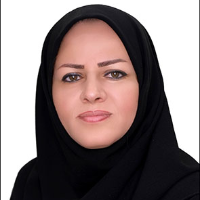Evaluating the effects of environmental development using degradation model (Case study: Bagh-e Shadi protected area)
Protected areas in the country requires monitoring and protection measures due to reduced quality. Therefore, in this regard, degradation model could be applied by quantifying human activities The aim of this study was environmental impact assessment of development in Bagh-e Shadi protected area using the degradation model in 2020.
To implement this model in the study area, first the area was divided into 406 pixels with a scale of 1: 50,000 and dimensions of 500 x 500 cm. Using existing maps, field observation and experts' opinions, 8 factors of degradation model in the whole region were identified and their severity was determined.
The results showed that among the identified degradation factors, tourism activities had the most degradation in the protected area of Bagh-e Shadi. Then, the ecological vulnerability of the area was calculated using slope, direction, altitude, climate, soil depth, vegetation density, temperature, rainfall, land use with GIS tools and classified according to severity. After calculating the physiological density, the degradation coefficient was calculated in each of the pixels and was classified into 6 classes and 3 categories based on fuzzy theory. Then all networks are compared in terms of severity and extent of degradation and the whole region was divided into three zones: prone to further development, in need of reconstruction and in need of protective measures.Discussion and
The results showed that in terms of land quality, 27.83% of the region is in the category of prone to further development (second categories), 35.22% in the requires reconstruction categories, 29.31% in the categories requires protective measures 64.7% are in the floor in need of protection measures (first categories).
-
Prioritization of Hotspots for Biodiversity Conservation in Yazd Province
Fatemeh Jamshidi Saedi, *, Sedighe Abdollahi, Mahdi Elahi
Geography and Sustainability of Environment, -
investigation of roundness and sphericity status of Surface particle in desert pavement in different types of pediments using Powers index
Razyeh Moradi, *, Majid Sadeghinia, Mohammad-Javad Ghaneei-Bafghi
Journal of Management of Natural Ecosystems, -
Spatial analysis of areas prone to conflict with reptiles in Yazd provinceCase study: Pseudocerastes persicus
Peyman Karami, *, Mahdi Zare Khourmizi
Journal of Animan Researches, -
Investigating the relationship between the morphology of Tamarix, Calligonum, and Iranian mesquite with the morphological characteristics of Nebkas (Case Study: Rigan, Kerman)
Abdolmajid Amirzadeh, Saeideh Kalantari, *, Alibeman Mirjalili
Desert Management,



